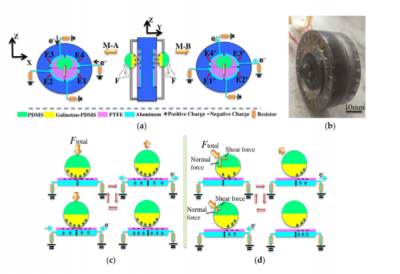Publication

Due to the increasing and urgent requirement of controlling accuracy in attitude and heading fields, the design and optimization of a detection system is becoming more difficult than before, especially in multi-axis detection and application. Over the years, the main research work in these fields has been based on the mechanism of motion. However, the main problem with such a mechanism is that most devices require an external power supply. This affects the lifetime and mobility of the device. Recently, a promising self-powered technology based on triboelectric nanogenerators (TENGs) has been proposed and extensively investigated. By scavenging the mechanical energy from the surroundings, sensors based on TENGs can operate sustainably without an external power (TENGs) has been proposed and extensively investigated. By scavenging the mechanical energy from the surroundings, sensors based on TENGs can operate sustainably without an external power supply. At present, a tactile sensor based on TENG has been widely adopted in wireless systems, robotics, biomedical fields, and portable electronics because of its high output power density. According to the report of Cisco, trillions of sensors will be fabricated and distributed for various applications in the next two years. From the perspective of technology development, self-powered, intelligent, perceptive, and maintenance-free are the main directions of sensor development in the future. Therefore, a self-powered tactile sensor has attracted more and more research interest in the application of the Internet of Things (IoT).
Researcher / Author: Tao Chen, Qiongfeng Shi, Zhan Yang, Jinchang Liu, Huicong Liu, Lining Sun, and Chengkuo Lee.
Nanomaterials, vol. 8, no.7, 503, 2018; https://doi.org/10.3390/nano8070503
For full publication paper, email: hifes@nus.edu.sg
- Home
- A Self-Powered Six-Axis Tactile Sensor by Using Triboelectric Mechanism
Singapore Hybrid-Integrated Next-Generation μ-Electronics (SHINE) Centre
- Block E6, #E6-5-3, 5 Engineering Drive 1, Singapore 117608
- +65 6601 8522
- shine@nus.edu.sg

